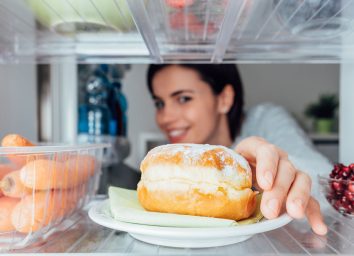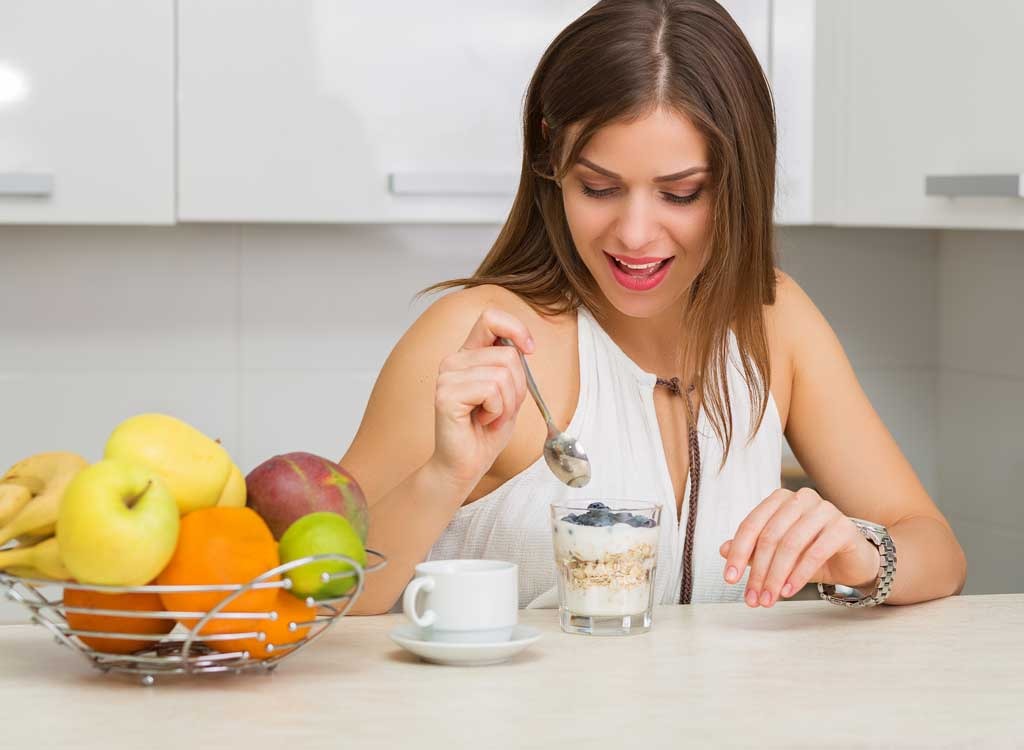
Every time you boot up your Facebook feed, it can seem like there's another new challenge popping up on your screen. And while some of these efforts are in the name of activism and raising awareness, there are plenty others that are simply the latest slim-down attempt—or worse, sales pitches. "Do this 30-day diet with me…and then buy the company's product from me if you want!" Sound familiar?
The truth is that you don't need an army of social friends to give you ideas for a rally cry, nor do you need to reinvent the wheel that makes weight loss move forward. Instead, there are numerous mini diet challenges to lose weight that you could be trying—some you already know you should be doing and some you don't.
Our point? Do something from the below list and we promise you'll see a change in your body faster than you'd expect. And for plenty of ways to get motivated, check out these motivation tips that actually work!
Reboot Your Breakfast with Protein

Carb-driven breakfasts, day in and day out? Enough of the madness! Instead of focusing on getting something into your belly, look to protein as your diet challenge. "It's easy to load up on carbohydrates like bagels, croissants, and cereals for breakfast. But protein is a key factor in satiety and keeping your blood sugar stable for longer periods of time," offers Lisa Hayim, MS, RD registered dietitian and founder of The Well Necessities. "Compared to a high-carbohydrate meal, a high-protein breakfast is associated with a level blood sugar for up to three hours post meal consumption."
Dial Down the Alcoholic Drinks

Okay, we know this one is no fun; it's perhaps the most of a challenge of many of the items on here! But a study published in the American Journal of Nutrition showed that alcohol is one of the biggest drivers of excess food intake.
Another study published in the journal Obesity has suggested that this may be because alcohol heightens our senses. Researchers found that women who'd received the equivalent of about two drinks in the form of an alcohol infusion ate 30 percent more food than those who'd received a placebo.
We're not saying you have to go dry, but if you replace your booze with H2O, you might be shocked at how different your jeans feel in a week or two!
Disconnect Emotion and Eating
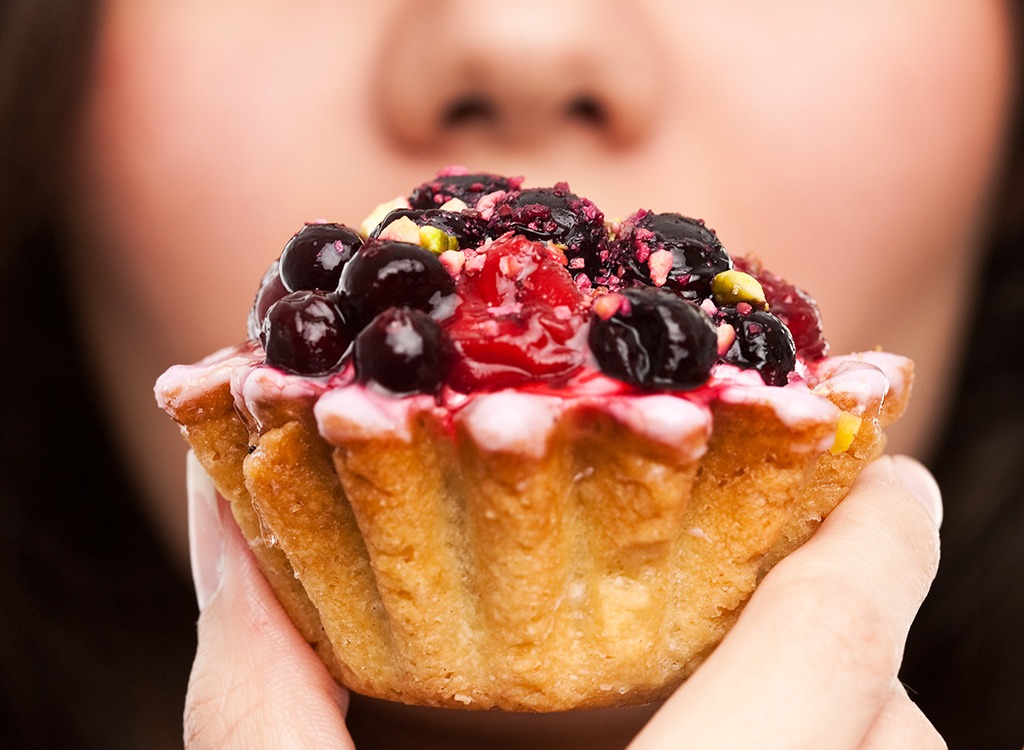
Although a negative feeling like stress, loneliness, and frustration will eventually quiet down, the calories you consume will not. So, here's the challenge: If you're feeling the slightest bit emotional and want to eat—or it's even time to eat—force yourself to either do something else or to eat something healthy and wholesome. Not only will you retrain your body for what to expect to feel better, but experts say that truly experiencing your emotions will teach you that it's possible to tolerate them head-on. Don't forget that the pendulum swings both ways, though; be careful of how and what you're eating when you're feeling super awesome, too!
Follow the 10:1 Rule
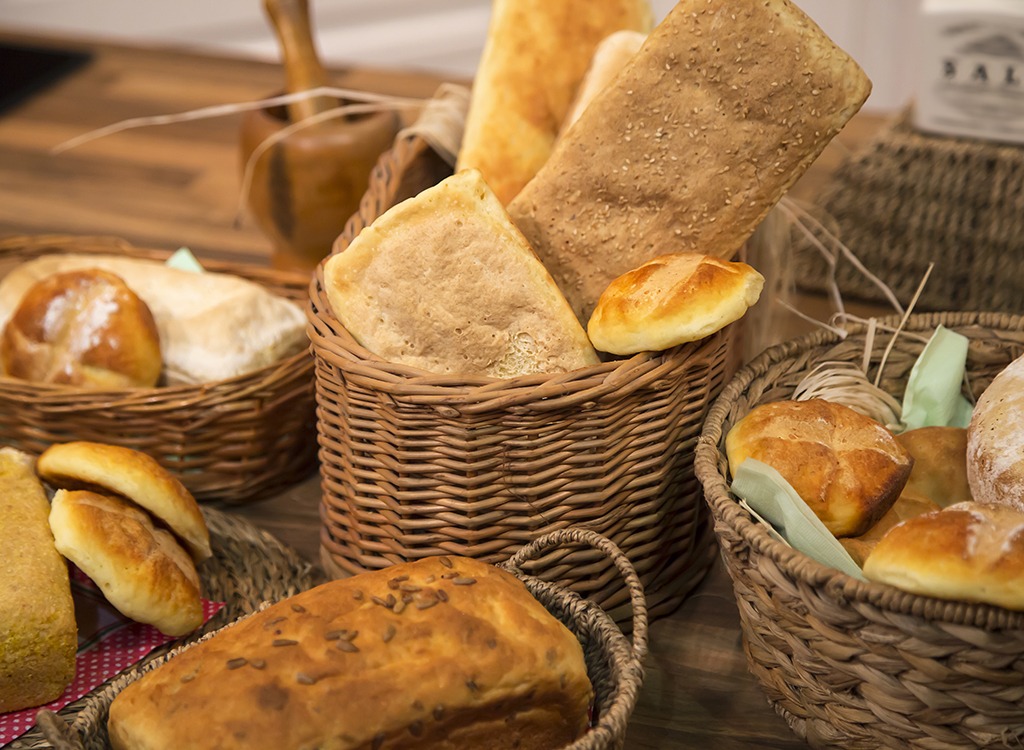
It's super simple but is a handy rule of thumb to keep in mind whenever you're shopping for a loaf of bread: "For every 10 grams of carbs, there should be 1 gram of fiber," says Rebecca Lewis, RD for HelloFresh. It really is our #1 tip for if you want to eat bread without gaining weight!
Get Your Fruits and Veggies!

If you do any challenge, we vote for this one! "Eat five servings of veggies (a serving = one cup raw, half-cup cooked) and four servings of fruit (a serving = a small piece of fruit or half-cup)," suggests Kimberly Gomer, RD, Director of Nutrition at Pritikin Longevity Center + Spa. "To promote weight loss, eat the veggies as a first course prior to your meals. Be creative; eat a chopped salad, a fruit salad, roasted veggies, or a big bowl of veggie soup." Be sure to sneak in some of these six best veggies for weight loss!
Allow Zero Distractions when Eating

Allow Lewis to elaborate: "It is difficult to eat mindfully if you are quickly rushing through a meal to get to the next thing. It's even more difficult to be mindful if you are distracted by an electronic device that steals your attention from the food." The challenge? "Take a full 30 minutes to eat your lunch or dinner. Seriously, set a timer. Do so without your phone, computer, TV, magazine, or other distractions. Eating with someone else is encouraged!"
Eat a Probiotic-rich Food

"Most people complain about constipation or not having regular bowel movements. I have found a simple solution: Consume one probiotic food or beverage a day," says Hayim. "This can range from Greek yogurt to kombucha to even just a half cup of miso soup. These probiotics add good bacteria into your gut and help stimulate a healthy gut flora and normal digestion." Try these probiotic products that aren't yogurt!
Wind Down with Tea

"Making a cup of tea, and then sipping it slowly, is a great way to incorporate a winding down period into each day. Often, the after dinner time period is one where the stresses of the day can build up. For many people this leads to snacking when they're not hungry and/or difficulty falling asleep," says Willow Jarosh, MS, RD, CDN, of C&J Nutrition. "A nightly herbal tea ritual is a way to wind down, hydrate, and relax before bed. This nightly tea time can also be combined with journaling as a powerful way to healthfully handle daily stress, sans food." Make the most of the benefits of tea with The 7-Day Flat-Belly Tea Cleanse! Test panelists lost up to 10 pounds in one week!
Watch Your Salt Intake

Look at labels more carefully and monitor how much sodium you're consuming. "Did you know that a standard frozen entree can have 750 mg of sodium (pay attention to serving size- often more than one serving). And your favorite protein bar can have up to 400 mg of sodium!" cautions Dr. Tasneem Bhatia, MD, also known as "Dr.Taz," a weight loss expert and author of What Doctors Eat and The 21-Day Belly Fix. "Your actual total daily sodium should be under 1,500 mg per day."
Conquer a Recipe That Intimidates You

"The worst thing that could happen is you mess up a meal and have to resort to cereal for dinner but the best thing is that you discover a new favorite meal you can make!" exclaims Janel Funk, MS, RD, LDN. "Culinary skills take a little practice and the more familiar you are with cooking at home, the healthier your meals can be!" Allow us to suggest browsing our diverse collection of easy, healthy recipes. We promise everyone will be asking for a reprise next week.
Indulge a Craving

Well, here's an interesting idea that is well-deserved after yesterday's challenge! "I typically like to challenge clients to mindfully eat a portion of food they crave— and practice doing this once a day," says Nan Allison, MS, RD, LDN of Allison Nutrition Consulting, Inc. "I recently challenged a client to have milk and cookies every afternoon and that helped her feel satisfied and not grab fast food for dinner." Not only will eating mindfully engage your senses more, allowing you to enjoy the treat more fully, but it will also slow you down and curb overeating.
Eat Double Rainbows

As tasty and fabulous as it sounds! "In other words, aim to consume two servings of foods naturally colored red (e.g. raspberries or red Swiss chard), orange (e.g. mangoes or carrots), yellow (e.g. lemons or bell peppers), green (grapes or kale), blue/purple (blueberries or beets), and white (bananas or onions). Each of these pigments represents hundreds— or even thousands—of disease-fighting, immune-enhancing phytochemicals," explains Julieanna Hever, MS, RD, CPT, a plant-based dietitian and author of The Vegiterranean Diet and The Complete Idiot's Guide to Plant-Based Nutrition.
Add More Pulses when Possible
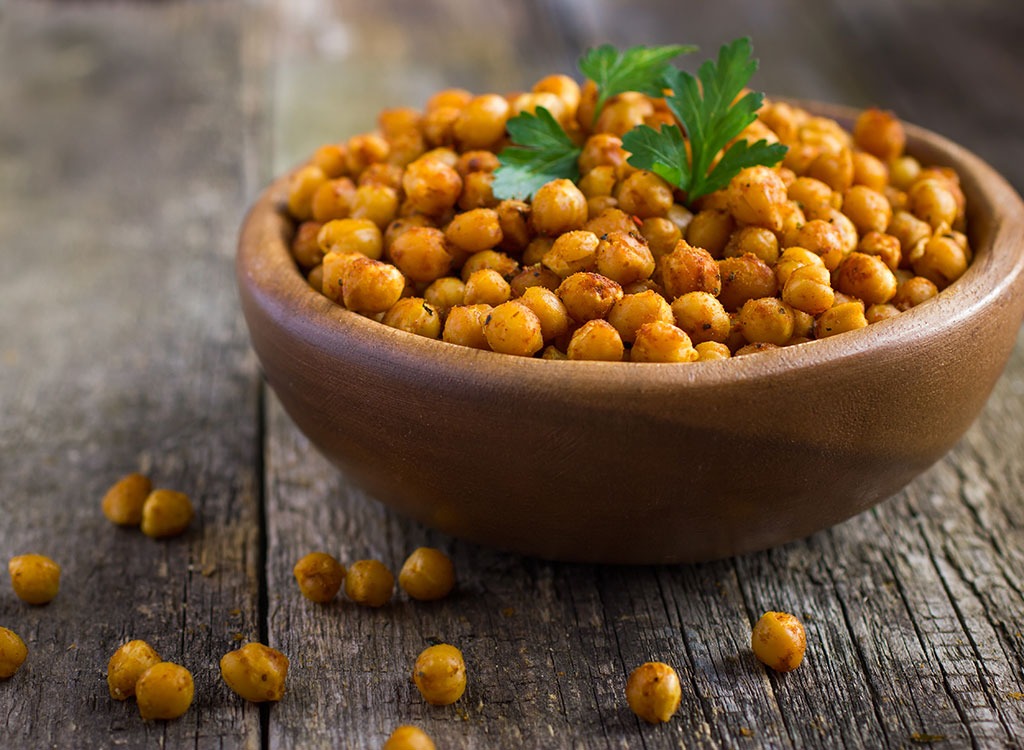
But no, we're not talking about pulsing your food with a food processor. Instead, we're talking about pulses as in dried peas, beans, chickpeas, and lentils! "These can be easily incorporated into any meal of the day," suggests Frances Largeman-Roth, RDN, nutrition expert and author of Eating in Color. "You can add white beans or chickpeas to smoothies, split pea puree to baked goods, or swap half the meat in any recipe with lentils. You'll get a healthy dose of plant-based protein, filling fiber, and nutrients like iron and folate." Love chickpeas? Then you won't want to miss these healthy chickpea recipes!
Go Sugar-free for Three Days

Naturally-occurring sugar (like in fruit) is fair game, but hands off the rest of the sweet stuff for 72 hours! "Read your labels and avoid added sugars," Dr. Taz says. "[You'll want to] watch for hidden sugars in protein bars, protein shakes, and 'healthy' gluten-free snacks." Funk elaborates: "While a cookie or candy here and there isn't horrible for you, this experiment will help you see what foods in your daily diet are contributing added sugars, like your bread, cereal, condiments and beverages." Check out easy ways to stop eating so much sugar!
Consume Only Whole Grains

Let there be bread! And pasta! And…just make sure it's whole grain! "The majority of us have no problem eating enough grains, it's just that we fail to take in enough whole grains," comments Erin Palinski-Wade, RD, CDE author of Belly Fat Diet For Dummies and Flatout blogger. "Whole grains provide a good source of fiber, B vitamins, and may even help regulate blood sugar levels and promote a loss of belly fat. For every grain you choose, make it 100 percent whole grain." This means your cereal, your wraps, your snacks, your rice at dinner; once your see how easy and flavorful it can be, it will be easy to stick with these swaps long-term. For more help, check out these ways to eat bread and continue fat loss.
Go Meatless for a Day
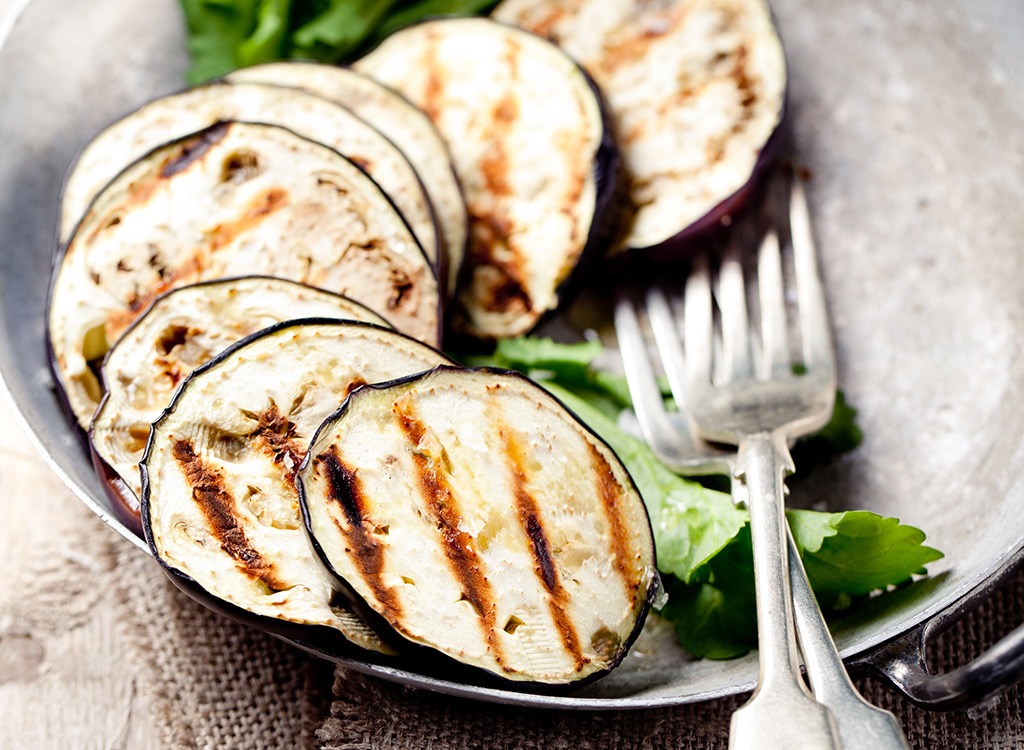
"Going meatless for one day a week can improve your health and the environment," shares Alexandra Miller, RDN, LDN, Corporate Dietitian at Medifast, Inc. "In fact, the 2015 Dietary Guidelines for Americans states that 'a diet higher in plant-based foods, such as vegetables, fruits, whole grains, legumes, nuts, and seeds, and lower in calories and animal-based foods is more health promoting and is associated with less environmental impact than is the current U.S. diet.' Furthermore, research suggests that eating less meat may help with weight control and be protective against certain types of cancer, diabetes, and heart disease."
Dabble with a New Grain

We love quinoa, but quinoa fatigue is real. "Try a new-to-you whole grain, such as farro, wheat berries or amaranth to add more variety into your rice and pasta repertoire," suggests Funk. "Whole grains are fiber-filled, which is great for digestion and feeling fuller longer. Head to your grocery store's bulk bin to sample only what you'll need for tonight's recipe."
Get More Omega-3s
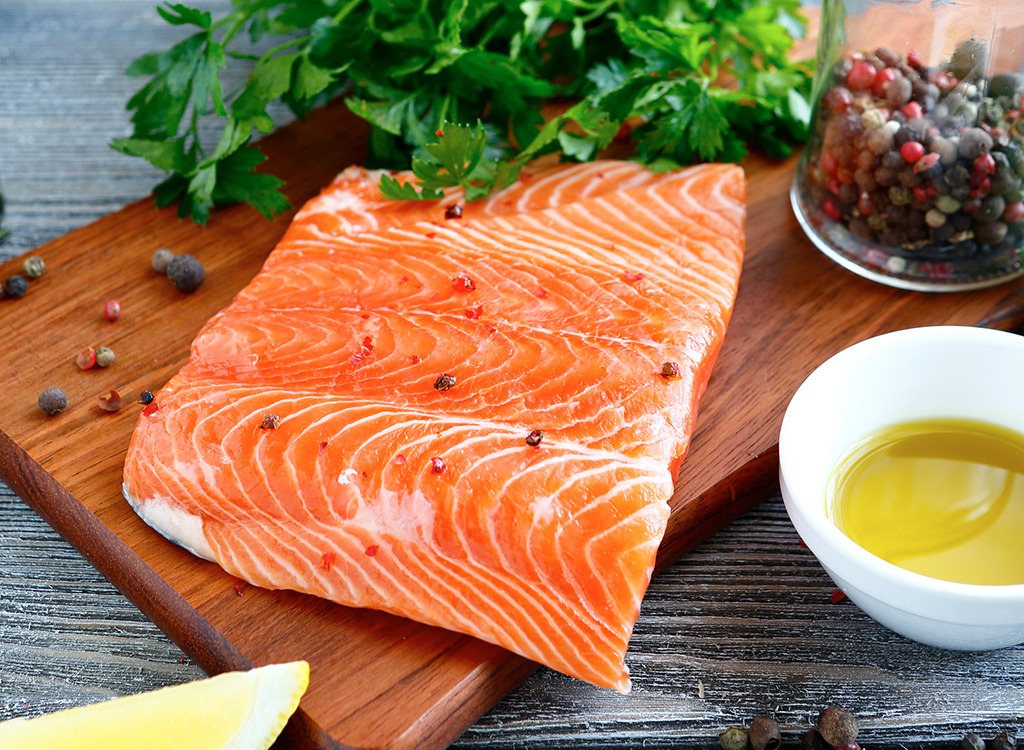
"Take little steps each day to get more omega-3s—we do this ourselves and encourage our clients to do it too!" rave The Nutrition Twins, Lyssie Lakatos, RDN, CDN, CFT and Tammy Lakatos Shames, RDN, CDN, CFT, and authors of The Nutrition Twins' Veggie Cure. "More and more research shows that omega-3 fatty acids help to keep your heart and your brain healthy."
Ditch Soda

"Most of us eat (or drink!) more than the American Heart Association's recommended maximum amount of added sugars each day (100 calories for women and 150 calories for men). One of the biggest culprits is a sugar-sweetened beverage." It's easier said than done, but you'll be so much better off if you cut out these sugar bombs. "I think you will find that you'll feel better and have more energy. If plain water doesn't suit you, try sparkling water with a splash of 100% fruit juice or infuse water with fruit and herbs (like lime slices, mint, and sliced strawberries)," offers Sarah-Jane Bedwell, RD, LDN, author of Schedule Me Skinny: Plan to Lose Weight and Keep It Off in Just 30 Minutes a Week.
Follow the Red, Green, and Orange Rule

You'll never look at your plate the same way again: "Follow our 'Red, Green and Orange Rule' to include one red, green or orange vegetable or fruit in every meal. When you concentrate on getting one of these colors at each meal, you'll get an excellent source of disease-fighting nutrients and [a meal] high in fiber and low in calories that's great for helping maintain a healthy weight and fighting aging," suggest The Nutrition Twins. "It's easier than you think: Make/ order omelets, sandwiches, wraps, and burritos with veggies added; use nori or lettuce for traditional sandwiches or wraps rather than carb-rich bread; top baked potatoes with steamed vegetables; and mix pureed canned pumpkin into oatmeal and add cinnamon."
Breathe Your Way to Better Eating

This challenge takes the leap from table to your body: "Take a full, deep breath between each bite.So often, we hold tension in our bodies throughout the day and, along with hunching over a computer, this can lead to shallow breathing. Taking a full, deep breath in (try to pull the breath deep into your lower abdomen) between each bite of food helps to slow you down a bit and relax some of that tension that may be sitting in your abdomen," explains Jarosh. "Slowing down with a deep breath between bites also gives you the opportunity to check in with your body regarding how you're feeling (hungry? satisfied? full?) so you can better base how much you eat on your body's natural cues." In case you need it, here's some more proof that mindful eating is the key to weight loss.
Cut off Eating at 7:30 P.M.

Take the no-eating-after-7:30 P.M. challenge and you might even realize you wake up feeling so great you want to make it part of your normal routine. "I love this as it really does help you to lose weight as late night eating is often unhealthy and can make it difficult to drop pounds," comments Mitzi Dulan, RD, author of The Pinterest Diet: How to Pin Your Way Thin and team nutritionist for the Kansas City Royals.
Do This when You Wake Up

If you aren't reading this until it's too late, then double up on your mini challenges for tomorrow. "Start your morning with a glass of lemon water and a positive meditation for a bright outlook," advises Lewis. This is actually one of the top tips for getting a flat belly—fast!—because lemons are a diuretic and help diminish bloat. Try it out and then be sure to avoid these reasons for a bloated stomach if you're trying to squeeze into your skinny jeans or tight dress for a special occasion this weekend!
Eat Only One-ingredient Foods

This one would be difficult to do all month, but it's definitely do-able for a day. "For the day, stick to eating foods that are only one ingredient. For example, if choosing to have oatmeal, find a company, like Bob's Red Mill that only puts in 'oats' with no additives on the ingredient list.Then, you can then combine it with foods like a banana, or cacao nibs, but avoid foods like granola which can have upward of 10 ingredients (including sugar)," explains Hayim.
"Breakfast can be: Oats with a banana cooked with water, or three scrambled eggs with greens mixed in. Lunch can be a salad (careful of dressings), or deli meat. Dinner can be something like a piece of meat or fish (no sauce or salt), a scoop of quinoa, and a cooked vegetable. Great snacks are bananas and nut butter (with no added sugar or preservatives!)."
Get Creative with Seasoning

"Slash sodium and reduce your risk your risk of developing high blood pressure and heart disease by replacing sodium with spices and with lemon," suggest The Nutrition Twins. "For example, try turmeric on your eggs; cinnamon in your overnight oats; rosemary and oregano on your chicken; black pepper and lemon on your fish and cumin in your rice. We love this because it's such a healthy way to boost the flavor while fighting bloat that accompanies salt!"
Get at Least One Serving of Greens into Your Diet

It sounds simple enough, but it's easy to forget when we're in a bind or eating out. " Get one serving of greens in at least one time per day, if not twice. Being healthy can be daunting. Oftentimes, we over focus on on macronutrients such as amount of carbohydrates, protein, and fat we are eating, and forget to look at nutrients and fiber," Hayim comments. "Greens are essential in helping with alkalizing, digestion, and nourishing the cells. I encourage my clients to get a green in any way they can: Spirulina/Chlorella in a smoothie; Kale in a salad or into a sandwich; even snacking on green beans or sugar snap peas raw."
Only Eat at Tables

Desktime = lunchtime? Guilty…usually. But not today! "Only allow yourself to eat while sitting at the table or center island in your kitchen," suggests Dulan (a table at the office is fine too; just avoid your desk for the day). "This helps to prevent the unconscious eating that can be a common problem." Be sure distractions like TVs, smartphones, and computers are out of sight too. Bedwell adds: "Studies show we eat more and are less satisfied when we are distracted. You will most likely discover you naturally eat less and enjoy your food more when you eat mindfully. As an bonus, you'll find you'll connect to your loved ones more when you eat mindfully together."
Combine Fiber and Protein

Accomplish this mission and watch your body feel so much better: "Make sure all of your snacks contain both fiber and protein for nutrients, satiety and stable blood sugar and energy levels," say The Nutrition Twins. "Pistachios are one of our favorite go-tos because they are crunchy and satisfying and they're one of the lowest fat, lowest calorie snack nuts, and among the highest in protein and fiber. We love this tip because it prevents people from turning to cookies or chips for snacks while also helping them slash calories so they can look leaner." Don't miss these high-fiber foods as you think about your potential combos!
Don't Eat Anything That Comes Out of a Box

"Shelf-stable foods are often high in the types of ingredients we actually want to avoid (sugar, saturated fats and sodium) because they are used to ensure the food will last a long time on the shelf," says Lewis. " Not to mention that most of the remaining ingredients are highly-processed or full of preservatives. The best way to help yourself eat more fruits/veggies (and thus fiber) is to avoid these types of foods. Cooking at home is encouraged!"
Plan a Snack That's Time-consuming

"For instance, rather than a grab-n-go munchie snack, choose in-shell pistachios since you'll need to slow down and remove the shells yourself; plus, this may help fool yourself full because leftover shells may provide a visual cue to potentially curb portions," advises Jackie Newgent, RDN, CDN, culinary nutritionist and author of The All-Natural Diabetes Cookbook. "As a bonus, you'll get both fiber and protein in pistachios—a combination which nutritionists like myself love recommending to help boost satiety."
Hydrate, Hydrate, Hydrate

Did we mention you should hydrate? Make it your MO to guzzle H2O like a rockstar. The recommended amount is 64 ounces, or eight glasses of eight ounces of water each per day, FYI. "Drink water instead of soda, tea, lemonade or other beverage you typically drink. Morning coffee is fine, but other than that, drink water with meals and throughout the day," suggests celebrity nutritionist Lisa DeFazio, MS, RDN. Even just sticking to this goal for one day can be a huge accomplishment and make you feel great. "Calories from beverage contribute to weight gain just like food, and water hydrates you better than any other beverage. By switching to water you are cutting down on your calories and sugar intake," DeFazio adds.
Use Smaller Plates

"Use your salad plates instead of your dinner plates and you'll be surprised how much less food you eat overall," suggests Largeman-Roth. If you're craving something sweet, try putting your dessert in a ramekin, which can give the illusion of a bigger treat thanks to its compact size. How easy was that? Keep going with more concrete tips for good habits for healthy eating!
Load Up on Protein

"Challenge yourself to eat three meals per day balanced with lean adequate protein, complex carbs, and healthy fats, along with two protein snacks (for women) or three protein snacks (for men)," says Caroline Cederquist, MD, author of The MD Factor and founder of bistroMD, a research-based diet delivery program. "For a woman of average height, which in the United States is 5'4", I recommend 110–120 grams of protein per day. For a man of average height, which in the United States is 5'11", I recommend 130–140 grams of protein per day." To figure out what that all means and which foods can meet those goals, check out these best vegetarian sources of protein!
Take 10 Minutes Every Week to Purge

It's like the joy of tidying up, but for your waistline. "Get a trash bag, go through your fridge and pantry, and throw out all of the expired food and junk food you know is not good for your health! If it's not in the house, you won't eat it," says DeFazio. Feeling guilty that something—even if it's junk food—is going to waste? Don't. It goes to waste whether you put it in your body or not.
Go Oil-free Whenever Possible

"Oil is a processed food that is pure fat containing upwards of 2,000 calories per cup," states Hever. "Substituting vegetable broth or water when sautéing and whipping up a tahini-based dressing for your salad or sauce for your food can save your hundreds and hundreds of calories in a day," she suggests.

